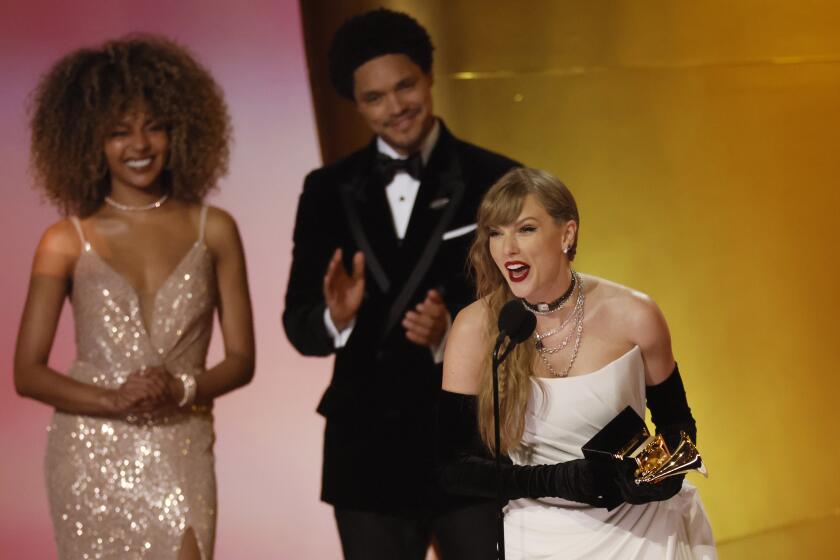Separate Barre Chords
- Share via
It’s easy to see how the flamboyant Ian Anderson can overshadow his band mates in Jethro Tull. When not singing, leaping about while playing the flute or darting back and forth across the stage, Tull’s charismatic front man often chats it up with members of the band’s adoring crowd.
Martin Barre, Tull’s guitarist for 28 years, knows better than to even attempt to compete. He’s perfectly content with his role in the group. But since last year, he also has a solo career that gives him an identity separate from the veteran progressive-rock band.
“I would never make too little of what Jethro Tull means to me and its fans,” Barre, 49, said by phone last week from a tour stop in Little Rock, Ark. “I love the companionship within the band, and we have really good, loyal fans. It’s something to be respected. I look at my solo work as a bonus, as something to coexist with Tull, not replace it.”
Barre’s latest solo album, “The Meeting,” includes his passionate guitar instrumentals plus several pop-oriented songs featuring lead vocals by Maggie Reeday and Joy Russell. Barre also produced the album and wrote all its music and lyrics.
“The big attraction of doing a solo project is that it allows me to do all of the songwriting, and that’s something I really enjoy,” Barre said. “And as a guitarist, I can venture out into all kinds of wonderful places, both acoustically and electrically.”
Isn’t there something that Jethro Tull provides, though, that Barre can’t get as a solo artist?
“Yeah--an audience,” Barre joked. “Actually, that’s true to some degree. When you’re a member of a so-called ‘classic rock’ band, the problem is that no radio stations will play your new music. They’d rather play ‘Aqualung’ for the millionth time.”
Even though he could probably play “Aqualung” and the other Tull classics in his sleep, Barre continually strives to improve his guitar technique.
“Every evening on stage is challenging,” he said. “I know that I can always play better. Eighty percent of what we play live is the same every night. But the rest is open to spontaneity and improvisation. When you try something new, and it clicks, it becomes part of your arsenal. I’m always looking for little oddball, magical things.”
More to Read
The biggest entertainment stories
Get our big stories about Hollywood, film, television, music, arts, culture and more right in your inbox as soon as they publish.
You may occasionally receive promotional content from the Los Angeles Times.








